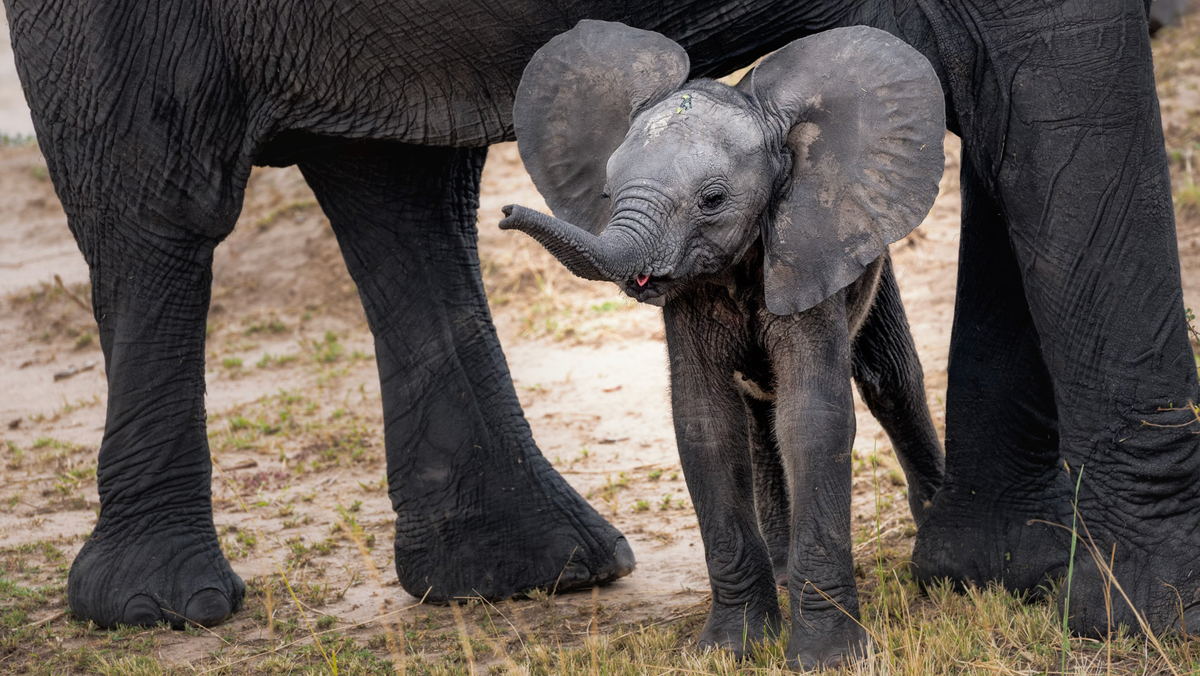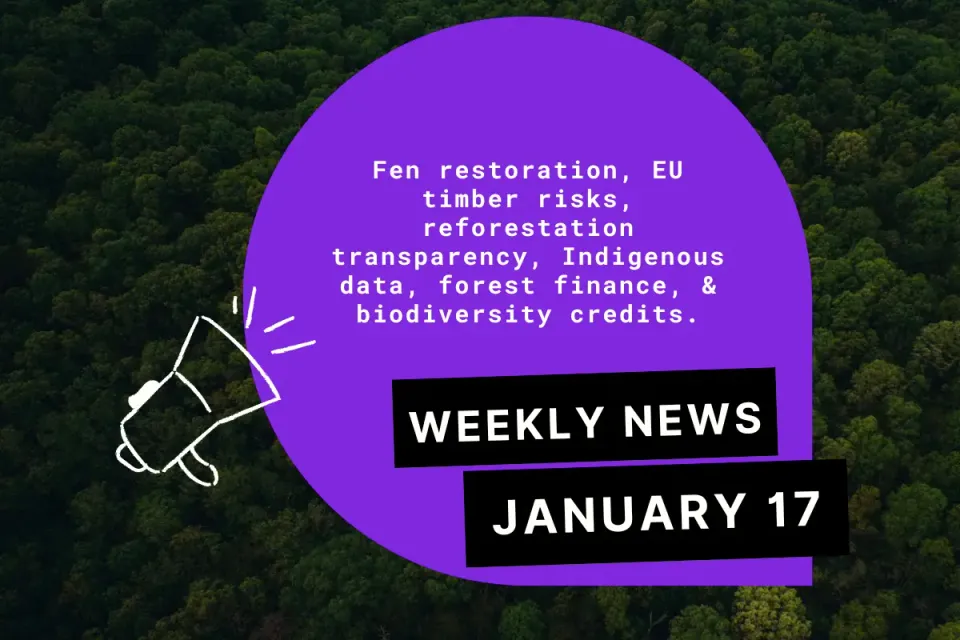New WWF Report Offers Conservation Hope
“The catastrophic consequences of losing some of Africa’s most precious species, from forest elephants to gorillas and ecosystems, would reverberate across the world.”

This article by Anne Nzouankeu and David Akana originally appeared in Mongabay.
- WWF’s recent “Living Planet Report” offers a bit of hope, showing that mountain gorilla populations increased by 3% between 2010 and 2016.
- Conservation interventions such as dedicated management of protected areas, extensive engagement with communities surrounding parks, close monitoring of habituated gorilla groups and veterinary interventions where needed are thought to have contributed, WWF notes.
- Still, the report shows that wildlife populations across Africa have declined by 76% in the past 50 years.
- The peril of the planet is also linked to the fact that financing is inadequate, with public and private entities very often investing in activities that harm ecosystems and drive climate change.
With recent conservation efforts and the involvement of Indigenous peoples and local communities in managing protected areas, forest elephant populations are on the verge of stabilizing,in at least one national park. This is, among other things, what WWF Africa said during a recent press briefing for the launch of the Living Planet Report.
Elephant populations, which are primarily found in Central and West Africa, had declined by more than 80% in past decades due to poaching for the lucrative ivory trade. However, “there are signs that, in certain specific places, conservation efforts are bearing fruit,” reassures Martin Kabaluapa, WWF regional director for the Congo Basin, contacted by Mongabay for a comment. He explains that in the Central African Republic (CAR), “anti-poaching teams have been set up in the Dzanga-Sangha National Park. These efforts have significantly reduced elephant poaching for ivory, one of the main causes of the population’s decline in the past. Collaboration with local communities and judicious land use planning have also played a key role”. It should be noted that almost half of all forest elephants in Central Africa are believed to reside in Gabon.
Indeed, with justover a 1000 left in the world, the mountain gorillas (Gorilla beringei beringei), according to the report, have experienced a 3% increase per year between 2010 and 2016, representing another ray of hope. Mountain gorillas are known to live primarily in Rwanda Uganda and the Democratic Republic of Congo.
Conservation interventions such as dedicated management of protected areas, extensive engagement with communities surrounding parks, close monitoring of habituated gorilla groups and veterinary interventions where needed are thought to have driven the increase within the Virunga Massif, WWF writes.
The overall growth shows what is possible in primate conservation. The mountain gorilla is the only great ape globally that is not in decline. “The conservation of elephants and gorillas in Africa faces a number of challenges that threaten the progress made. Poaching for ivory and bushmeat remains a persistent problem, seriously affecting the populations of both species. The loss of habitat due to deforestation, agriculture and mining exacerbates this situation by reducing living areas for animals and increasing human-wildlife conflicts,” Kabaluapa says. He adds that, “in addition, diseases such as the Ebola virus are decimating gorillas, while climate change is altering ecosystems, making it even more difficult for these species to survive.”
A planet in peril
The WWF’s “Living Planet Report” shows that wildlife populations across Africa have declined by 76% in the past 50 years. This decline affects mammals, birds, amphibians, reptiles and fish. Freshwater ecosystems have been hit the hardest, experiencing an 85% decline, reflecting the growing pressures on rivers, lakes and wetlands due to dam construction, overfishing, pollution and water extraction.
Deforestation, land use change and overgrazing are the main causes of the decline in 69% of global terrestrial ecosystems. The report warns that Africa is facing dangerous and irreversible tipping points due to nature loss and climate change. However, it also suggests there’s a five-year window for stakeholders to take action and reverse this trend.
Kabaluapa says that “Africa’s biodiversity is calling for urgent action. The interlinked crises of nature loss and climate change are pushing African wildlife and ecosystems to their limits, with global tipping points threatening to destabilize entire ecosystems.”
He adds, “The catastrophic consequences of losing some of Africa’s most precious species, from forest elephants to gorillas and ecosystems, would reverberate across the world.”
Funding for sustainability
The peril of the planet is also linked to the fact that financing is inadequate, with public and private entities very often investing in activities that harm ecosystems and drive climate change. Nearly $7 trillion annually is directed toward harmful practices like direct payments, tax incentives and harmful agricultural subsidies that exacerbate climate change, while only about $200 billion is invested in nature-based solutions.
“Nature and ecosystems are either not taken into account when it comes to funding, or they are given values equal to zero. To ensure the sustainability of our ecosystems and nature, we need to look at funding issues, because they impact on all human activities and have direct effects on biodiversity and nature in general,” according to Jonas Kemajou, Tridom landscape financing manager at WWF, who presented the report to the press.
Although this recorded increase in mountain gorillas offers a glimmer of hope, scientists are concerned that the scale of the decline could still have profound implications for the future of the species.
The report underlines the urgent need to transform the global finance system to support environmental sustainability and combat climate change. It indicates that, while a portion of the global economy that is over half of the world’s GDP — an estimated $58 trillion — relies on nature, current financial practices largely ignore the value of natural resources, leading to exploitation and degradation.
This inequality of investment is remarkable between different ecosystems, where the Congo Basin receives less funding compared with others. For example, while the Amazon and Southeast Asian forests each received $1 billion dollars in 2021 from multiple sources, the Congo Basin received only $40 million, which is just 4% of what the others have benefited, according to figures provided by WWF.
To address funding gaps, the report says a significant change is needed at all levels of governance to promote financing that heals rather than harms the planet. It suggests this can be achieved through two key strategies. The first is financing green, which involves mobilizing funds for conservation and climate initiatives via investments in nature-positive businesses, for example. The second is greening finance, which focuses on aligning financial practices with sustainability goals.
WWF’s “Living Planet Report” concludes that it is no exaggeration to say that what will happen in the next five years will determine the future of life on Earth, and it urges everyone to place the world on a sustainable trajectory before negative feedback of combined nature degradation and climate change place us on the downhill slope of runaway tipping points.
License
Nzouankeu, Anne, and Akana, David. “WWF Report Offers Glimmer of Conservation Hope — Yet Warns of a Planet in Peril.” Originally published in Mongabay. Available under a Creative Commons Attribution-ShareAlike 4.0 International License. Minor changes made to original formatting, images and title.




